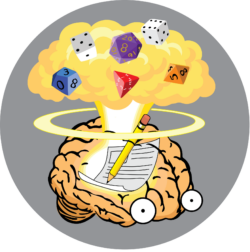I have a promise that Documenting will take about 2-5% of total work output. Which is kinda true only because I’ve separated Planning from it. We want people to document so activities can be monitorable.
I came to this value because I asked: Why is it so hard to Plan? What makes it harder to Plan than just document what you observe?
Making a Monitoring System is itself a very difficult project which I’ve tried to simplify. Documenting without any monitoring system in place is half the work, or 1% of the day. BUT with a monitoring system in place can be 2x the work. Of course with a monitoring system in place work can finally be Managed.
Monitoring Systems will be a future topic and something I will create Training Material about in the future. (I need to be able to have other people set up their Monitoring Systems, even when I’m gone).
Lets get to Planning then.
When we Document, we work at the typical Ideation Rate of 1 concept or Idea per minute. This assumes we are thinking and conversing at the same time. With writing speed this is just 5-6 words.
When we Plan, we take an Idea and Name all its Constraints. Naming Constraints is an Ideation activity and follows the same 1 idea per minute. so to name most of the Key constraints of an Activity can take 4-10 ideas or x7 as much time on average. (note That i’m assuming the Person is able to make Information into Actionable Information or Criterias; without that skills DOUBLE all values here).
Constraints Typically have;
Triple Constraints: Cost, Time, and Utility/Scope/Quality.
Utility/Scope/Quality typically clusters at a minimum of 2 ideas, and can be ALOT.
Ideate and Document x1
Constraints x4-x10 (x7 median)
After Constraints, we need to Schedule which goes first. Which looks easy once the Constraints are all known. We can actually stop it here at ~x5-x11 of Ideation speed, but Scheduling is actually more complicated because we are now Entering the Realm of Risk and Uncertainty.
This means when we Schedule Events to happen, one after the other, when then think what can go wrong and how better can we Arrange the Schedule. So I came up with 20x to just keep it simple. Because we can get into Analysis Paralysis lets cap the time it takes to Schedule x20
Schedule and Risk Management x2-x3 of constraints.
Ideate and Document Activities x1
Ideate Constraints of each Activity x7
Ideate Schedule and Risks x12
x2-x5 to all values if unable to make Information or Ideas Actionable or Formulate Criteria.
x2-x5 for the level of Complexity.
So if it takes you 10 minutes to write out a process then it will take you 200 minutes to write out the Plan.
If we Asked people to Give us their Activities, it will take them x4-x7 the amount of time to know all the constraints. x2-x5 if they dont know how to standardize and make these all comparable to one another, actionable, and criteria-ed.
BUT there is a catch.
If we standardize all the Activities we then just plan at x7-14 Scheduling.
If we standardize the Scheduling then it becomes x4-x10 the Planning from the Ideating.


Leave a Reply